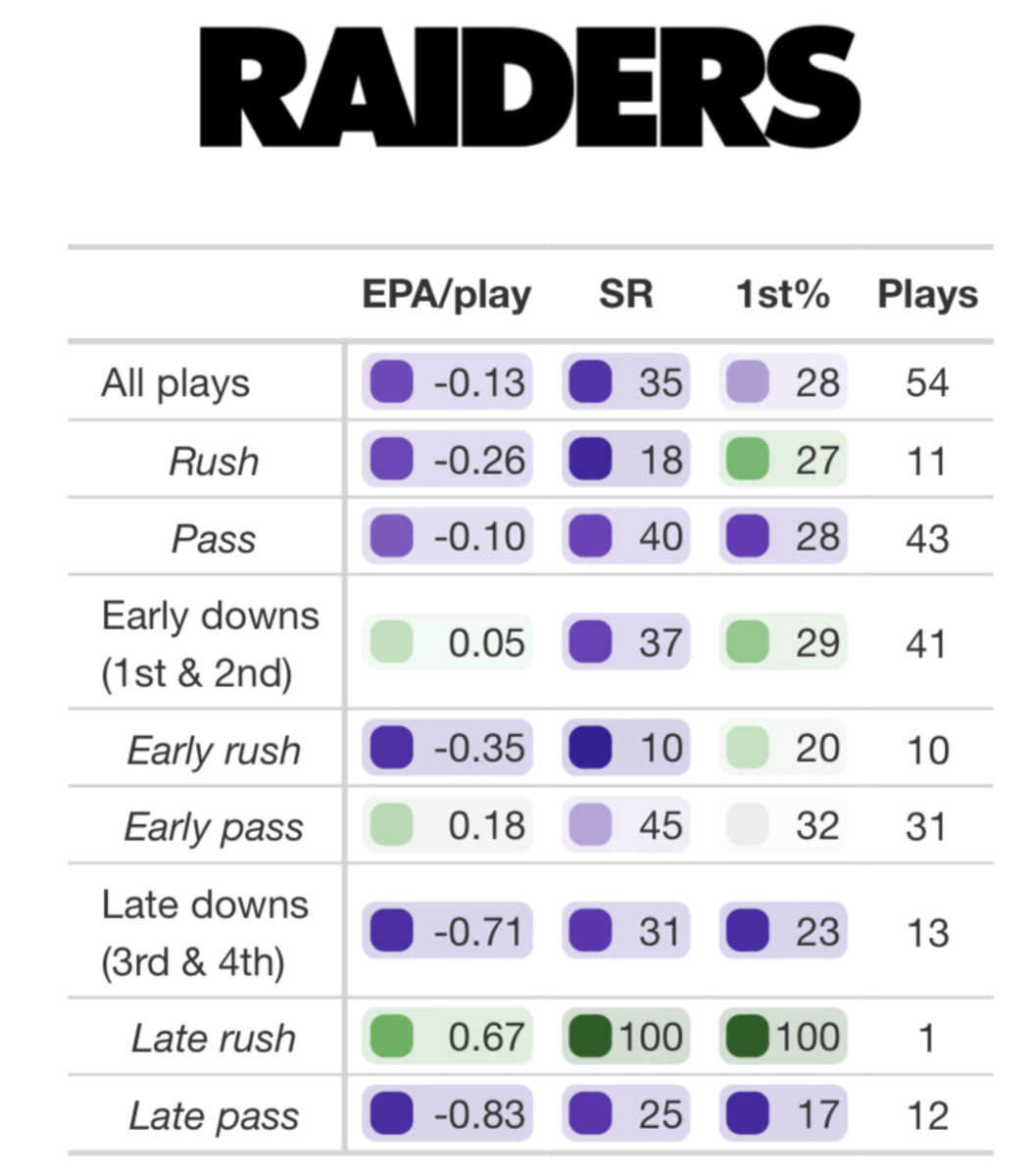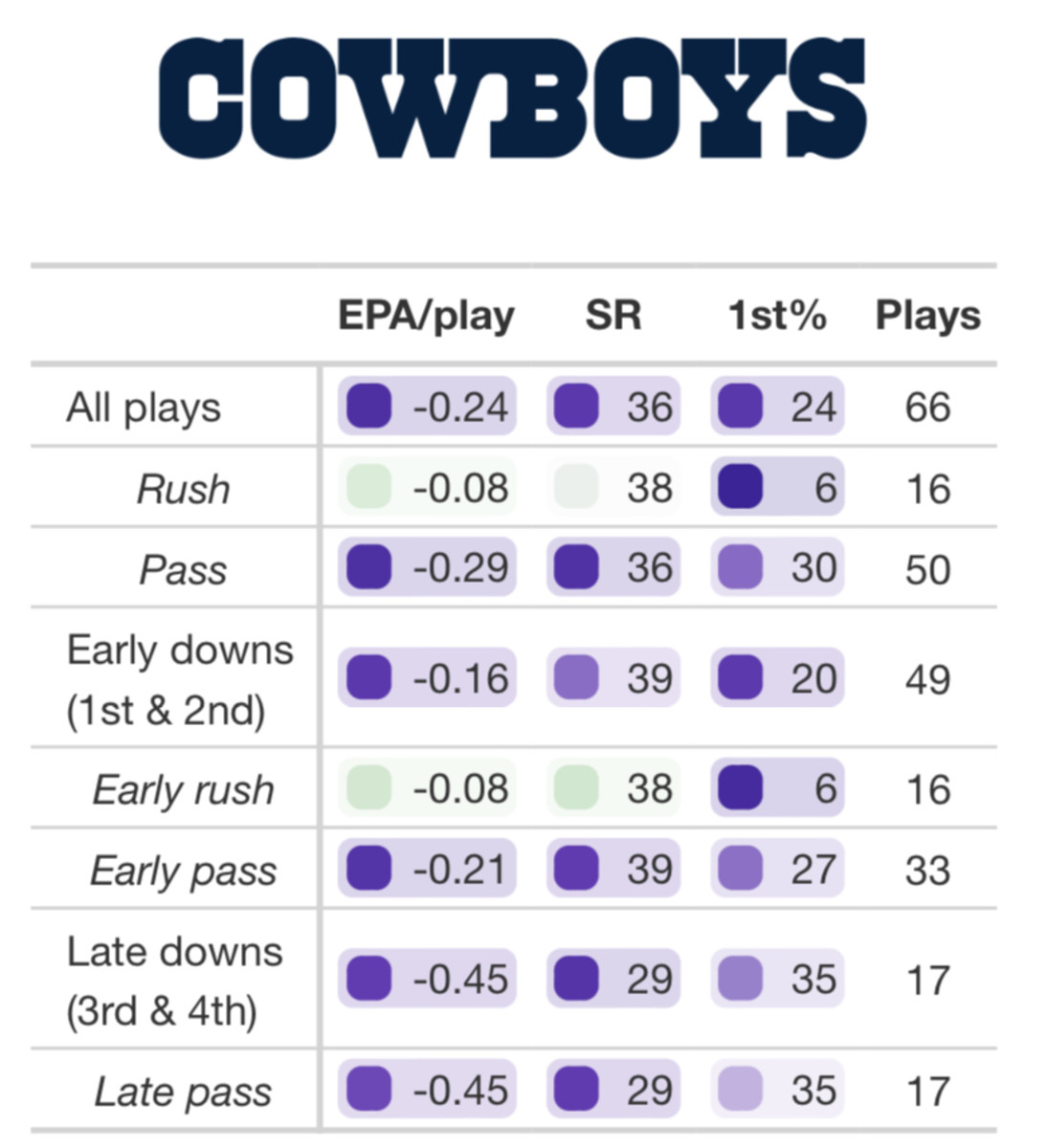Emergence of the Chiefs’ Defense Has Been a Saving Grace This Season
On October 10th, the Kansas City Chiefs were playing against the Buffalo Bills in a battle between the two teams who played in the AFC title game the previous season. The Chiefs were coming off of three rough performances in a row and to this point, they had allowed 0.225 Expected Points Added (EPA) per play — the worst in the NFL. On the other hand, the Bills had allowed -0.352 EPA per play, the league's best mark by a huge margin. While Chiefs fans were hopeful that the Philadelphia Eagles game was the start of the turnaround, seeing as the Baltimore Ravens and Los Angeles Chargers games were easily winnable, this game would dash those hopes quickly.
This game was not like the Ravens or Chargers ones. It was total destruction, a mauling, a beatdown. When they held a 10-90% win probability, the Chiefs allowed 0.478 EPA per play. For the game, they allowed 8.1 yards per play. The defense couldn't stop a nosebleed. They faced a 31-13 deficit entering the fourth quarter and the game finished 38-20 in favor of the Bills. Through five weeks, the Chiefs had the eighth-worst defense in NFL history per Football Outsiders' Defense-adjusted Value Over Average (DVOA) statistic.
The defense now had a lot of work to do if it wanted to redeem itself, as the Chiefs were 2-3. While the offense was shooting itself in the foot with constant back-breaking turnovers, the defense was still mostly at fault. Thankfully for the Chiefs, a sharp 180-degree turnaround was coming.
In Week 6, facing the Washington Football Team, the Chiefs showed a slight improvement in the first half with -0.043 EPA allowed per play, but their second half was sensational with -0.449 EPA allowed per play. They had allowed 4.8 yards per play, 276 total yards and 13 total points. The leaders in that game were the four primary pieces of the secondary: safeties Juan Thornhill and Tyrann Mathieu and cornerbacks L'Jarius Sneed and Rashad Fenton.
The following week, the Chiefs went to Tennessee to face the Titans and they had a horrible game, but the defense really wasn't as responsible for that as the offense. The Chiefs lost by a score of 27-3, but they held Derrick Henry to -0.21 EPA per rush, 86 yards, 3.0 yards per carry and no touchdowns. Of course, this desperation towards stopping Henry by the defense then caused it to be burned through the air, as the defense allowed 0.618 EPA per dropback.
After that, the Chiefs faced the New York Giants on Monday Night Football in Kansas City and they completely held down the weak New York offense. Steve Spagnuolo's defense allowed negative EPA on Daniel Jones' 40 dropbacks and on the team's 18 designed runs. This was followed up by a dominant performance against an Aaron Rodgers-less Green Bay Packers offense that seemed to implode against a Spagnuolo blitz-heavy gameplan, with the Chiefs getting home and pressuring Jordan Love, 19 times on 39 dropbacks.
The Chiefs jumped from 32nd in Defensive EPA per play in Weeks 1-5 to 19th in Weeks 6-9, including being seventh in Rushing EPA allowed per play and 14th in Passing EPA allowed per play. However, it is obvious that they were primarily facing poor or inexperienced quarterback play. Could this just be favorable matchups that fully explain this improvement? The next two games would give everyone the real answer that they were looking for, with matchups against the Derek Carr-led Las Vegas Raiders and Dak Prescott-led Dallas Cowboys.
In the first nine weeks of the season, each of Carr and Prescott had ranked in the top 15 quarterbacks in EPA per play and both have consistently been top 10-15 quarterbacks over the last few years. If the Chiefs' defense could put on a show against them heading into the bye week, that would be a major sign that this improvement was for real.
First, we have the game against the Raiders: Week 10 in Las Vegas, Nevada, with the whole nation watching on Sunday Night Football. How did the defense perform? Well, a picture is worth a thousand words.

Look at all of that purple. That indicates that the only place the Raiders did well here was on late-down rushing attempts, where they had 0.67 EPA per play. Of course, this was on one attempt, and the early-down rushing was a disaster. The biggest success here is certainly the late-down passing defense, where the Raiders only got three successful plays and two first downs out of 12 such plays. It was an unbelievable showing for the defense.
Now we move on to the Week 12 game in Kansas City against the then 7-2 Dallas Cowboys. There was a lot of talk heading into this game, mainly about how the Cowboys had the league's top offense in points scored with 31.6 points per game and how the Chiefs would probably not be able to slow it down. The Chiefs may have gotten a bit lucky, with Amari Cooper being ruled out due to a positive COVID test and left tackle Tyron Smith remaining out because of a nagging ankle injury. With that said, the Cowboys still had more than enough star power to put up a good offensive performance. Did the Chiefs' defense finally come back down to Earth?

This is where it all got confirmed, for the entire football world to see, that the Chiefs' defense was not what it was in the first few weeks of the season. The Cowboys' offense had nothing to offer in this game. While part of this must be blamed on Mike McCarthy, Prescott and injuries, credit must also be given to the Chiefs. Several players like Chris Jones, Frank Clark, L'Jarius Sneed, Melvin Ingram and Charvarius Ward had quite impactful performances.
That -0.24 EPA per play and -0.29 EPA per dropback put on by the Cowboys in this game both land at the 11th percentile, while the -0.16 EPA per early-down play and -0.45 EPA per late-down play are 17th and 21st percentiles, respectively. The Cowboys also had a 36% success rate on their 50 dropbacks, which ranks in the 12th percentile. It was truly a dominant performance from the Chiefs' defense, forcing the league's top scoring offense to nine points and sub-20th percentile per-play production.
So which players, as the Chiefs move through the bye and on to the home stretch of a possible Super Bowl redemption, are most to praise for this defensive success? Let's look at the defense's highest-graded players from Pro Football Focus (PFF) in this time span. Two players have a grade above 85: Jones and Rashad Fenton.
Jones' move back inside has been a massive success. Following up a solid run on the edge with an 11.7% pressure rate and three sacks in the first eight weeks, Jones has has a dominant run back inside. He has a 19.4% pressure rate over his last three games.
Fenton, on the other hand, has been a total shutdown corner. He's allowed 153 yards over 261 coverage snaps, the second-fewest yards allowed over 250-plus coverage snaps in the NFL among cornerback. Since Week 7, it's even more impressive: Fenton has allowed just 37 yards over 163 coverage snaps in that time. A big reason why he hasn't gotten the attention he deserves is that he doesn't get targeted much, being targeted 13 times since Week 7 — compared to 29 targets on Ward and 37 targets on Sneed.
Ingram has been a revelation, joining the team and giving the defensive front an additional presence to take the attention off of Jones and Clark. Thornhill has allowed just 72 yards on 231 coverage snaps and has not missed any of his 27 attempted tackles since Week 6. Clark has four or more pressures in six of his last seven games, including multiple games in the last four contests with five pressures and a sack in each.
Mathieu, along with obviously being the anchor and leader of the defense, has not given up a touchdown in coverage this season and has just one missed tackle since Week 2. Sneed, similarly to Mathieu, continues to be a Swiss Army knife, making plays all over the field. He has eight pressures and five combined sacks and QB hits, two interceptions in the last three games and no touchdowns allowed in coverage since Week 6.
Lastly, the rookie Nick Bolton, who has had a roller-coaster season. His coverage issues are well known, but there is an elite trait he brings: tackling running backs for a loss. According to PFF, Bolton currently leads the NFL in tackles for a loss, and among players with 50+ tackles, he is one of two with a sub-five percent missed tackle rate.
Since Week 6, the Chiefs' defense has the fewest points allowed in the NFL with 87 — nearly half of what it allowed in the first five weeks. All of these players, at various different levels and with various different premium traits, and more are responsible for this defensive jump in performance and can be thanked for this season getting back on track while the offense still tries to figure it out.
Read More: How to Watch Kansas City Chiefs vs. Denver Broncos
For more Kansas City Chiefs analytics and analysis, follow @SIChiefs and @WichitaChiefSam on Twitter.
Editor's Note: All data in this article is accurate as of Sunday morning.
